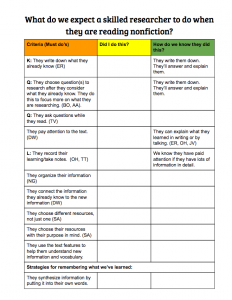I am a firm believer in collaboratively constructing assessment criteria with students in order to determine what has been learned. I also know from experience that the process of creating, reviewing, revising, and applying criteria with fourth-graders can be a lengthy process. It is also one which can lose effectiveness if we don’t maintain momentum. We need time to discuss, chart ideas, categorize, test-through-application, and revise our criteria. This year, as I prepared for 4JR’s first collaboratively constructed assessment, I decided to try using Google Apps For Education-GAFE.
Using Google Docs To Chart and Draft Criteria:
As my fourth-grade class neared a stopping point in our nonfiction and research unit, we started discussing how we would know what we learned. The students knew throughout the unit that they would do a post-unit assessment. They expected to evaluate what they took away from the unit and what might need to be reviewed or extended in a later unit. When it came time to discuss criteria, I gathered the students together in front of our SMART board and asked:
I set up the google doc prior to the lesson. As we discussed the criteria, an assessment tool was born. Where there was confusion, we discussed what could be observed to know if a researcher had met the criteria. These discussions were captured in the third column.
I originally planned to categorize the criteria at this time, but as we continued the discussion, I sensed they needed to work with the criteria first. I decided it was enough to generate criteria and discuss how we would know for now and to come back to categorizing later.
The students first applied the criteria to the post-assessment they had completed the day before. Once we had our working document, I immediately pushed the doc out to them using our Google Classroom and sent them off to assess their research skills and behaviors with their reading partners. Here are a few samples of what I got back:
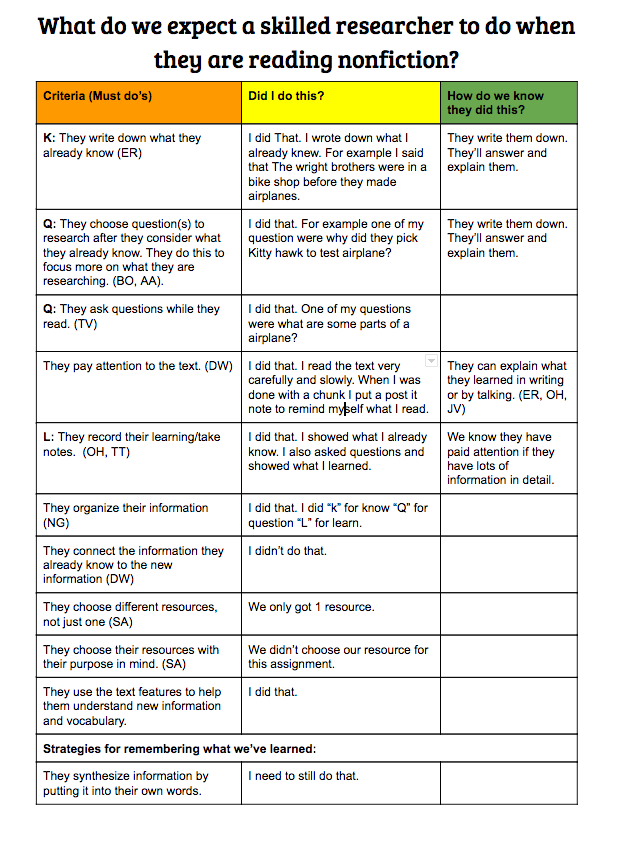
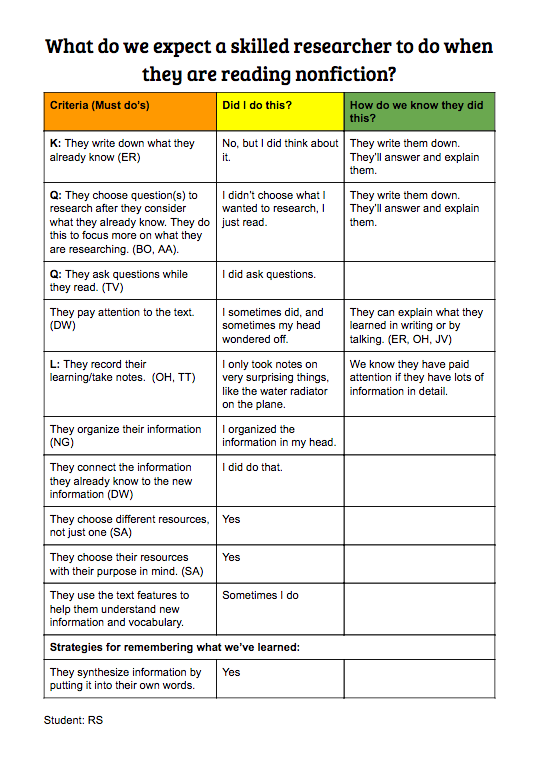
After actually applying the assessment to their own work, evidence emerged on what students were doing as researchers. It also became evident which criteria students understood enough to discuss in detail when applied to their own work.
Ready to Revise:
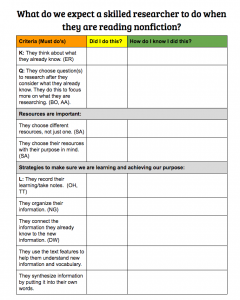
We reconvened at the end of the session. At that point, I felt the students were ready to consider how we might organize our criteria. I asked them if any of our criteria could be categorized into groups. We use Project Zero’s Visible Thinking routine, “Generate, Sort, Connect, Elaborate,” often in our community, so this was a fairly accessible question. The students discussed how we could reorganize our criteria and we ended up with a “final” tool for future use. The students can now access this rubric at any time using our Google Classroom.
Reflections:
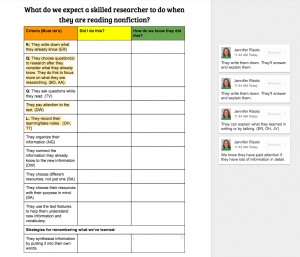
This lesson took just under 90 minutes. Some students did not make it all the way through the criteria when they were self-assessing but I was confident that they’d had enough interaction with the criteria and tool to discuss the categorizing and other possible revisions. Those students finished their individual assessments at home that evening for homework.
I will definitely use this process in the future. As the students become ready to evaluate themselves in more depth, we can move into more of a rubric than a checklist-with-explanation.
